Despite record low unemployment, you finally hired one – a diamond in the ruff. After a 16 hour shift on-the-road, his only question at the end of the day was, “What’s next?”
Things are going so smoothly, but then a call from your insurance agent, “The insurance company is hammering me. That new driver you hired has a DUI. They’re asking you to put him in a non-driving capacity or they're going to reevaluate your insurance program.”
As an insurance agent with many accounts in Construction, I’ve had numerous bad driver scenarios like this. It’s a trend getting hit from two sides with good drivers hard to find in low unemployment labor pool and increasing auto rates from insurance carriers driving up costs. Thankfully, for commercial insureds, there are solutions to the problem – prevention and alternative insurance options.
Prevent the situation with a Fleet Safety Program. A doctor might tell you prevention is the best medicine and it goes the same with avoiding the hire of a driver with a bad record. Implementing a well thought out Fleet Safety Program will set the standard for your company and, more often than not, keep this problem at bay.
Screening company drivers is the first step to setting up a Fleet Safety Program. “Frequency breeds severity,” is a saying in the insurance industry. If a driver has a history of minor violations or near misses odds are, at some point, a major incident will occur.
The best tool at the disposal of a business owner to screen employees is a Motor Vehicle Record (MVR). MVR’s are obtained through the Public Abstract Request System (PARS) program with the Wisconsin DOT. Your company can create an account here and begin screening drivers once they sign a release. There is a cost associated with running records, but nothing overly expensive.
Insurance carriers will want to be sure your drivers fall within a tolerable range of driving violations and accidents. Each company’s standards will be unique to them, but the above chart is an example of a standard the insurance carrier will expect a company to have. It's recommended you run MVR's on employees once a year, but if you join the PARS program it will notify you if a driver has a violation preventing the need to run MVR's arbitrarily every year.
A second step in implementing a Fleet Safety Program is to give safe driver training. There are a variety of ways to train drivers but the best training topic to explore is distracted driving because it's the number one reason insurance carriers are increasing auto rates. Another topic very useful for commercial drivers is Accident Investigation training. In the case of the companies I insure, we'll bring in experts to help train your drivers at no cost.
Explore alternative insurance options if the employee is too valuable to let go. There will be a cost to your bottom line but in many situations it is preferable to eat the cost rather than let valuable employees go.
Opening a separate insurance policy for a driver is an option. There are some circumstances where insurance carriers will outright refuse to insure certain drivers. In these cases an insurance agent can go to market with a carrier such as Progressive for a one-off driver policy. Costly - but often the only acceptable option.
Some situations can be fixed by changing work arrangements around. One solution to keep an employee with a bad driving record is to change their role by partnering them up with an employee who is able to drive. In some situations your company will be able to have the employee drive his or her own vehicle. While not usually the ideal solutions for your company, it will often appease insurance carriers and keep your coverage in place.
Companies going through these situations often entertain thoughts that insurance carriers are being overly harsh or risk averse in threatening premium hikes or non-renewing their coverage. The truth is underwriters are facing a hardening market on auto rates. It might actually come as a shock to some businesses to know that your vehicles are the single largest exposure to your company and your insurance carrier.
Insurance carriers have been losing money on auto insurance for years. The reason is that workers’ compensation claims have state-mandated limits, while auto liability does not. Innocent people hit by commercial vehicles often bring legal action. The consequences of distracted driving combined with our increasingly litigious society is the main driver behind increasing rates.
Screening employees and having a formal Fleet Safety Program is the best way to avoid a 15% auto increase or non-renewal. That said, when a company is against the wall and needs to keep an employee on the solution is to explore opening an additional policy or change their working arrangement.
Additional fleet safety resources:



 Back in 2012, Coca-Cola was hit with a $24 Million distracted driving judgment. The plaintiff’s attorneys were able to successfully argue that Coca Cola’s cell policy for drivers was "vague and ambiguous." They also suggested that Coca-Cola was aware of the dangers but withheld this information from its employee driver, which led directly to the circumstances that caused the accident. The jury awarded $14 million in actual damages and another $10 in punitive damages to a woman hit by a Coca-Cola truck driver who was chatting on her cell phone.
Back in 2012, Coca-Cola was hit with a $24 Million distracted driving judgment. The plaintiff’s attorneys were able to successfully argue that Coca Cola’s cell policy for drivers was "vague and ambiguous." They also suggested that Coca-Cola was aware of the dangers but withheld this information from its employee driver, which led directly to the circumstances that caused the accident. The jury awarded $14 million in actual damages and another $10 in punitive damages to a woman hit by a Coca-Cola truck driver who was chatting on her cell phone.


 With the recent downturn in the economy, business focus has turned from safety to more “important” financial objectives. The truth of the matter is that poor safety initiatives could end up being the most costly part of the year for an organization. The associated costs of an ineffective and poor
With the recent downturn in the economy, business focus has turned from safety to more “important” financial objectives. The truth of the matter is that poor safety initiatives could end up being the most costly part of the year for an organization. The associated costs of an ineffective and poor  Not long ago, I can recall when it seemed like only the larger, national, insurance carriers specializing in trucking insurance would take into consideration SafeStat Scores in underwriting a trucking Risk. This included carriers like Great West, Northland, Lancer, Sentry, Carolina Casualty, Continental Western, etc. At the same time very few, if any of the underwriters working for the smaller regional carriers, at least in the Upper Midwest, knew where to look for this information let alone how to interpret it. When I speak of smaller regional carriers, I’m talking about companies like Acuity, Integrity, Secura, General Casualty, etc. From my standpoint as a trucking insurance agent, this was a good thing, the less they knew, the easier it was for me to place a piece business with them especially business that was marginal from a SafeStat standpoint but that may have had good loss experience. Well, those days are over thanks to the
Not long ago, I can recall when it seemed like only the larger, national, insurance carriers specializing in trucking insurance would take into consideration SafeStat Scores in underwriting a trucking Risk. This included carriers like Great West, Northland, Lancer, Sentry, Carolina Casualty, Continental Western, etc. At the same time very few, if any of the underwriters working for the smaller regional carriers, at least in the Upper Midwest, knew where to look for this information let alone how to interpret it. When I speak of smaller regional carriers, I’m talking about companies like Acuity, Integrity, Secura, General Casualty, etc. From my standpoint as a trucking insurance agent, this was a good thing, the less they knew, the easier it was for me to place a piece business with them especially business that was marginal from a SafeStat standpoint but that may have had good loss experience. Well, those days are over thanks to the 

